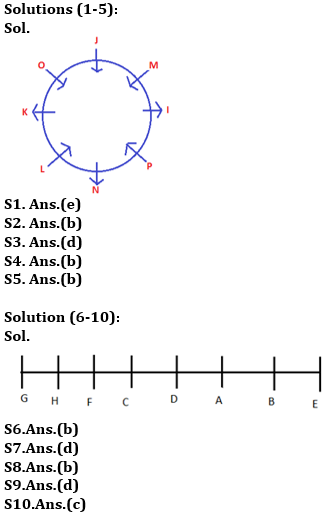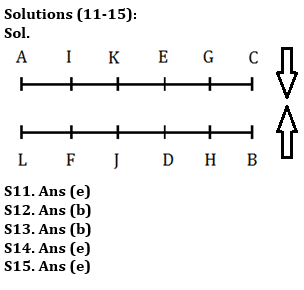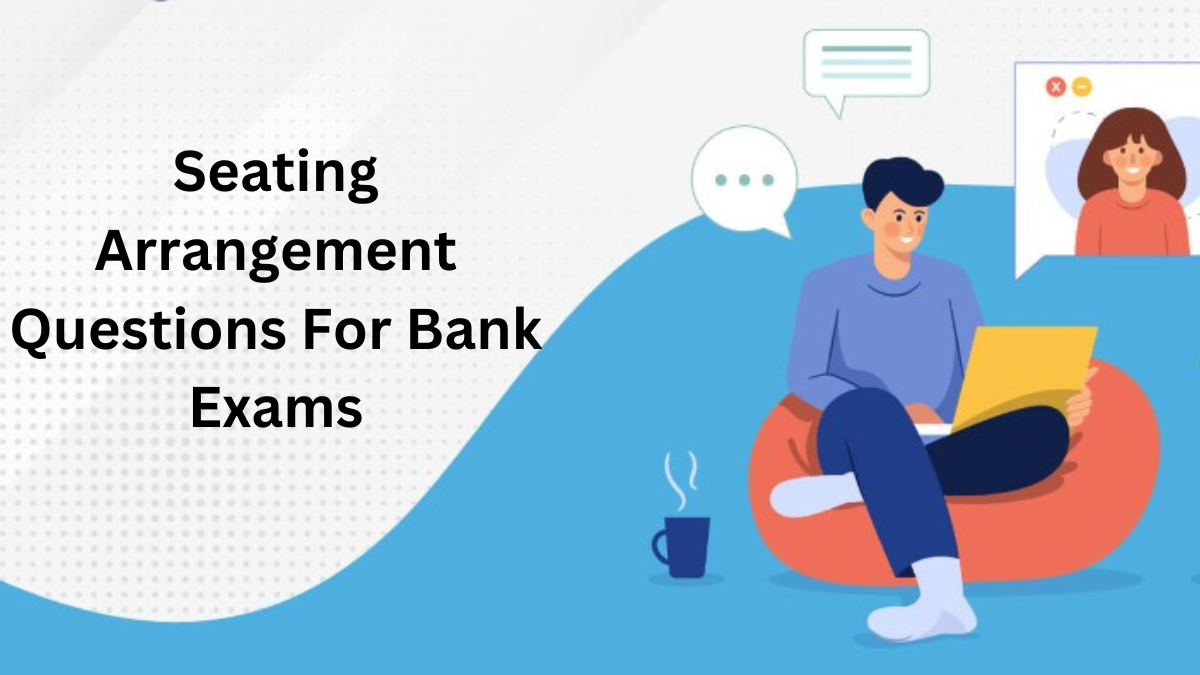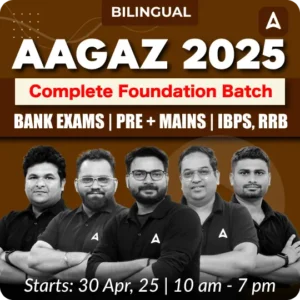Table of Contents
Types of Seating Arrangements
The various types of Seating Arrangement Questions asked in the Reasoning section of bank exams are as follows:
- Circular Seating Arrangement
- Square Seating Arrangement
- Rectangular Seating Arrangement
- Triangular Seating Arrangement
- Single Row/ Double Row/ Uncertain Seating Arrangement
Tips and Tricks to Solve Seating Arrangement Questions
Here are a few tips and tricks to Solve Seating Arrangements Questions.
- The first step is to analyze and collect all the direct statements provided in the puzzle.
- Note down all the negative statements provided in the puzzle, if any.
- Write all the information that you have gathered in a simplified form so that you do not have to look at the confusing paragraph over and over again. E.g. if the statement is “P sits 3rd to the right of Q” then you can simply write it as “Q →3R P”.
- Make sure to draw different arrangements in advance because you will have to make possibilities.
- Do not stick to any possibility just because it’s almost complete. Keep canceling out the possibilities as you proceed that do not follow or go against the information that is provided in the puzzle.
- At last, there will be only one positive that you will have at the end that will be following all the positive as well as the negative statements given in the puzzle and that would be the required solution.
- Practice makes a man perfect so make sure you practice as much as you can
Seating Arrangement Questions
Directions (1-5): Read the following information carefully and answer the questions given below:
Eight persons I, J, K, L, M, N, O and P are sitting around a circular table but not necessarily in the same order. Five of them are facing inward while others are facing outward.
M is third to the right of K. N sits third to the left of M. Three persons sit between N and J. O sits third to the right of N who is not facing the centre. L sits third to the right of I, who is not facing the centre.
Q1. Who sits exactly between N and me?
(a) J
(b) K
(c) M
(d) L
(e) None of these
Q2. Who among the following is second to the right of J?
(a) L
(b) K
(c) M
(d) N
(e) None of these
Q3. Which of the following statements is/are true concerning P?
(a) P is the opposite of O.
(b) P is fourth to the right of O.
(c) P is fourth to the left of O.
(d) All are true
(e) None of these
Q4. Who among the following is second to the right of the one who is immediately left of P?
(a) L
(b) K
(c) M
(d) N
(e) None of these
Q5. Who among the following sits opposite me?
(a) J
(b) K
(c) M
(d) O
(e) None of these
Directions (6-10): Study the following information carefully and answer the given questions:
A group of eight friends – A, B, C, D, E, F, G and H – are sitting in a straight line facing north. A sits third to the right of F. Neither A nor F sits at the extreme ends of the line. E is not an immediate neighbour of either A or F. One person is sitting between H and C. G sits at the end of the line. B sits on the immediate right of A. E doesn’t sit to the left of D.
C sits at the 4th position from either end.
Q6. How many people sit between H and A?
(a) One
(b) Three
(c) Two
(d) Five
(e) None of these
Q7.Who sits exactly between D and G?
(a) H
(b) A
(c) E
(d) F
(e) None of these
Q8.How many people sit between F and B?
(a) One
(b) Three
(c) Two
(d) Five
(e) None of these
Q9. What is the position of D concerning F?
(a) Second to the left
(b) Third to the left
(c) Third to the right
(d) Second to the right
(e) None of these
Q10. If G is related to E and F is related to A, then similarly, D is related to?
(a) H
(b) E
(c) C
(d) F
(e) None of these
Directions (11-15): Read the following information carefully and answer the questions given below:
Twelve people are sitting in two parallel rows containing six people. In rows 1 – A, I, G, K, E and C are seated (but not necessarily in the same order) and all of them are facing south. In rows 2 – L, H, D, J, B and F are seated (but not necessarily in the same order) and all of them are facing north. Each member seated in one row faces another member of the other row.
E sits 2nd to the right of C and doesn’t face J. A sit at one of the ends and diagonally opposite to B. Three persons sit between B and F, who do not face G . J sits immediately left of D but does not face C. Two persons sit between I and G, none of them sits at the end. The one who faces K sits 2nd right to L.
Q11. Who among the following faces C?
(a) G
(b) K
(c) I
(d) A
(e) None of these
Q12. How many persons sit to the right of H?
(a) No One
(b) One
(c) Two
(d) Three
(e) Four
Q13. Four of the following five form a group, who among the following does not belong to that group?
(a) B
(b) K
(c) C
(d) A
(e) L
Q14. If in a certain way, A is related to J, K is related to H, then who among the following is related to D?
(a) G
(b) K
(c) H
(d) F
(e) I
Q15. Who among the following sits 3rd right to K?
(a) A
(b) K
(c) E
(d) C
(e) No one
Directions (16-20): Study the information carefully and answer the questions given below.
A certain number of persons are sitting in a row facing north. Only four persons are sitting between P and S. Q sits third to the left of U. W sits third to the one of the extreme ends of the row. Only three persons sit between S and T. R sits second to the left of S. U is an immediate neighbour of T. More than 14 persons
are sitting in the row. Only two persons sits left of P. W sits immediate right of U.
Q16. How many persons sit in the row?
(a) 20
(b) 16
(c) 17
(d) 15
(e) None of these
Q17. Who among the following sits third to the right of P?
(a) U
(b) T
(c) Q
(d) R
(e) None of these
Q18. How many persons are sitting between Q and W?
(a) four
(b) two
(c) one
(d) three
(e) None of these
Q19. Who among the following sits exactly between R and Q?
(a) U
(b) T
(c) Q
(d) W
(e) None of these
Q20. What is the position of U with respect to S?
(a) Fourth to the left
(b) Fifth to the right
(c) Second to the left
(d) Immediate right
(e) None of these


Solutions (16-20):
S16. Ans.(b)
S17. Ans.(c)
S18. Ans.(e)
S19. Ans.(d)
S20. Ans.(b)
| Related Posts | |
| Data Interpretation Questions | Simplification Questions |
| Quantitative Aptitude Questions | Puzzle Questions |




 GA Capsule for SBI Clerk Mains 2025, Dow...
GA Capsule for SBI Clerk Mains 2025, Dow...
 The Hindu Review October 2022: Download ...
The Hindu Review October 2022: Download ...
 World Malaria Day 2025
World Malaria Day 2025



